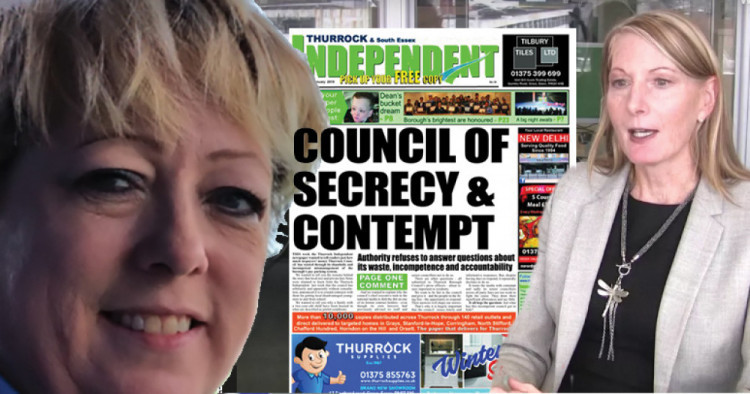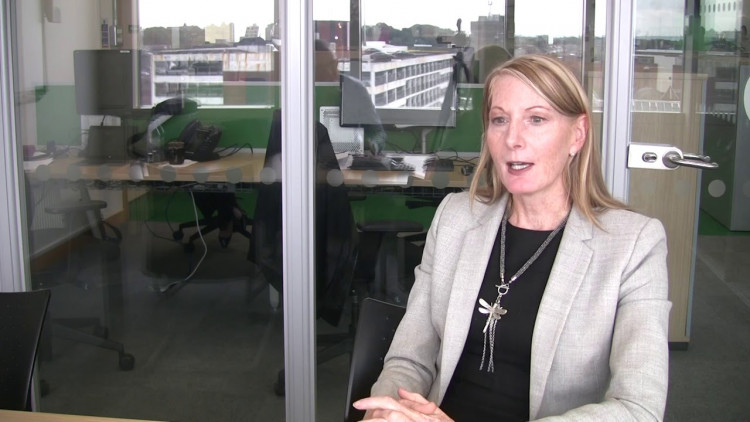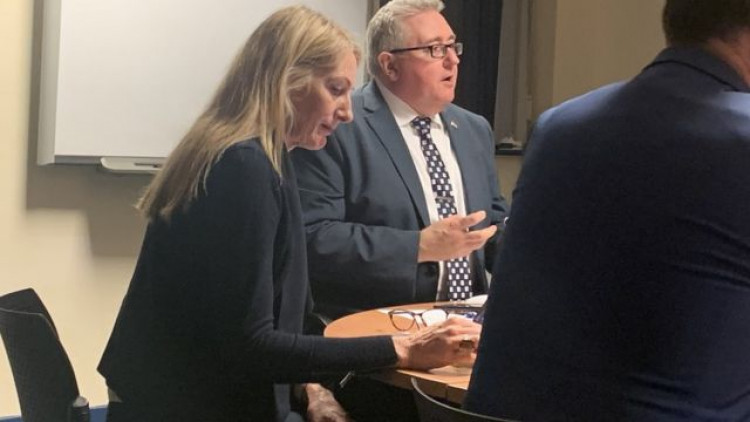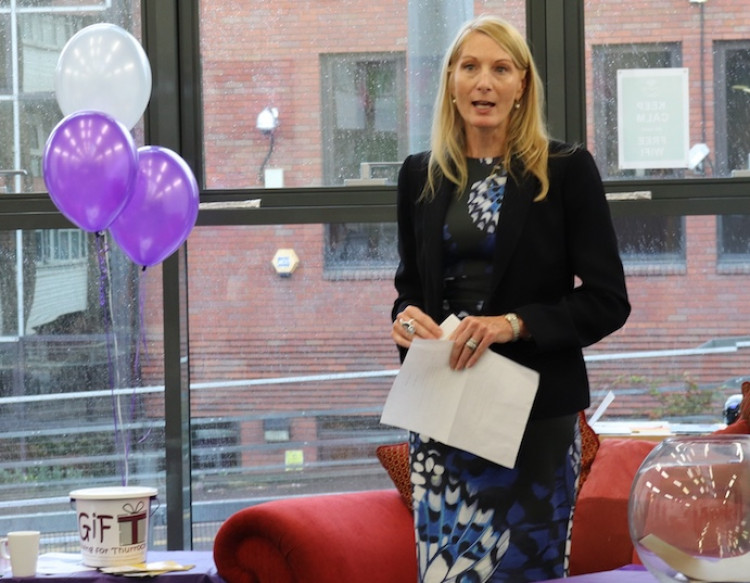How 'screaming' Lyn Carpenter's ego, her demand for dominance, lack of trust & respect for officers and her contempt for democracy led to the downfall of Thurrock Council
By Neil Speight 16th Jun 2023
By Neil Speight 16th Jun 2023


THE Government's detailed Best Value Report into the catastrophic financial failure of Thurrock Council has highlighted the inadequacies of the senior people involved in its management, with members of the council's political leadership criticised and senior officers condemned for failing in their responsibilities.
The commissioners who produced the report say: "We identified significant failings of leadership throughout our inspection.
"These failings were evident in the behaviours of members and officers, and in the operating style and behaviours of the former Chief Executive."
That chief executive, Lyn Carpenter, has been singled out and her management style and capability exposed as flawed by the commissioners' comments.
Ms Carpenter, who was paid substantially more that £200,000 a year, joined the council in late 2015 and her tenure has coincided with the ever-decreasing spiral of efficiency and accountability of the council.
Her management style drew fierce criticism and her obsession with micro-management and secrecy led to her frequently being criticised regarding democracy and the rights and expectations of borough residents with contempt.
Her approach to the media and democracy won her the accolade of being a target for Private Eye. In August 2018 the satirical magazine awarded Ms Carpenter its Rotton Boroughs 'Kim Jong Un Award' for secrecy, saying in its citation that she ordered the council's press office not to respond to some media inquiries "because reporters had had the temerity to ask awkward questions".
Thurrock Nub News, its predecessor The Thurrock Independent newspaper and editor of both, Neil Speight, were at times banned from asking questions on the direct orders of Ms Carpenter. Twice she instructed officers to report Mr Speight to the Independent Press Standards Organisation on the grounds of misreporting, fabricating stories and misrepresenting the council's statements.
On both occasions the complaints were rejected – once with a rebuttal from the members of its adjudication panel who criticised the council for make the spurious complaints.

She also repeatedly found herself at odds with borough MP Jackie Doyle-Price and it has been widely reported that the two women, both in key public positions in the borough, rarely spoke. Ms Doyle-Price has been a repeated critic of the council's secretive policies.
All of that, summed up in this story, is reflected in the judgement on Ms Carpenter published by the commissioners.
Her failings are listed in detail, as this extract from the Best Value Report shows:
"The leadership style of the Council's former Chief Executive has therefore been a recurring theme throughout the interviews we have undertaken with officers and cabinet members.
"Many described the impact that former Chief Executive had on the way the Council operated from the very start of her tenure in 2015.
"Among those officers who had a direct working relationship with the Chief Executive, there was a clear view that – at a personal level – the former Chief Executive was very supportive in dealing with individual pastoral matters. She was generally supportive of staff and accessible to them. But this supportive style was not extended to professional issues or to matters of performance and delivery.
"In these cases, senior officers described the former Chief Executive as having an autocratic leadership style.

"They described a clear command and control approach and highlighted an absence of psychological safety in their relationships with the former Chief Executive. Many felt reticent to have open and honest conversations with her for fear of being blamed or being publicly shamed.
"We were told that: 'If something went wrong people were fearful that it would "hit the fan" with the Chief Executive and of her reaction. There was a blame culture… where the Chief Executive needed someone to blame.'
She would frequently say "who do we sack for this?"'…you would find you have an e-mail in your inbox where she'd identify the spelling mistake in one of the outgoing letters, et cetera.
And then you know there would be hell to pay for certain errors, etcetera.
And it did make you feel a little bit guarded, I guess in terms of what's going to happen next.'
"This leadership style led to many of the senior officers adopting coping strategies to avoid confrontation with the former Chief Executive.
"Many described either 'keeping their head down' or 'protecting their teams' from this style of leadership. Some reported that they sought HR support regarding the Chief Executive's behaviours.
"Some highlighted instances where the Chief Executive refused to speak with them for a period lasting several weeks, following disagreements. Others still described the long term impact that this style had on their relationship with the Chief Executive, and the strategies that senior officers would adopt to manage the risk.
"One told us: 'I think people became weary of this leadership style over time rather than do something about it. We would often plan outside the meeting how we would present an issue or problem to minimise a strong reaction from the Chief Executive'.
"Those directors and senior leaders we asked were unable to describe times where the former Chief Executive inspired trust or created a working environment where they could have transparent and constructive conversations with her.
"Few could give examples of cases where their views and opinions were valued, or of where giving and receiving feedback and constructive challenge was welcomed.
"The Chief Executive's leadership style had an equally significant impact on the way directors and senior officers worked together as on her relationships with individual colleagues.

"Directors were in broad agreement that this way of operating the directors board was 'heavily influenced' and 'driven' by the Chief Executive.
"Directors described the former Chief Executive's lack of desire to prioritise or give appropriate time to strategic discussions. Few could give examples of where they were encouraged to collaborate with others around strategic issues or to solve problems.
We were told: 'Any strategic conversation in terms of what needed to be prioritised would always be overtaken by something operational that the Chief Executive wanted to fix at directors board'.
"Directors also described their reluctance to bring strategic matters to the meeting. This was seen as the Chief Executive's meeting and one in which she set the agenda and tone. It was her prevailing mood or her view on an agenda item or issue that would determine how it would be discussed.
"Directors described that the Chief Executive would often speak first to give her view. This would have the effect of closing down the conversation and crowding out challenge.
'When there was a crosscutting corporate issue raised at the directors board meeting, no one would want to say anything until they knew what the Chief Executive's view was on the issue for fear of disagreeing with her. It was a parent – child relationship with directors board and no one wanted to be the naughty child. This was not a meeting where open debate and constructive challenge were encouraged or facilitated.
"Directors described the Chief Executive's behaviours at this meeting as being 'challenging' and difficult to respond to whilst in the meeting. 'You often felt that you were not listened to and that your opinions did not count'.
"Through our interviews with directors board members, we sought to establish whether their experience of this leadership style in directors board differed from that in their line management meetings with the Chief Executive.
"Some described regular contact with her via line management meetings, but conversations focused largely on transactional and operational issues. 'Our one-to-one meetings with the Chief Executive were in the main transactional and very rarely strategic and if the meetings were cancelled people were relieved'.
"Others described infrequent one-to-one meetings and a desire to avoid raising strategic issues wherever possible so not to draw attention to areas of ambiguity and uncertainty, issues still in development or problems that they may have experienced.
"These officers reported a fear that the Chief Executive would get too involved in the detail or in micro-managing. In effect, these directors were happy to be 'left alone' to get on, and told us that 'it was sometimes easier not to tell her things'.
"The former Chief Executive's style of management had serious consequences for the performance of the Council.
"It eroded the effectiveness of informal checks, balances and early warning mechanisms:
"It reduced the extent to which problems could be identified early and addressed. Directors described an unpredictable and at times volatile persona, where the Chief Executive was not accepting of, and visibly angry when receiving, 'bad news.'

"Several of the directors interviewed recounted the Chief Executive losing her temper on several occasions in the open plan offices.
"They recalled incidents where the Chief Executive was 'screaming' at them or at other senior officers. Directors and senior officers felt they needed to work out solutions before flagging problems, instead of seeking help or support.
"It reduced the extent to which senior leaders could challenge beyond their professional disciplines. Without the necessary level of psychological safety, trust and confidence in their relationship with the Chief Executive, senior officers cannot confidently focus on their corporate responsibilities or be effective in holding each other to account.
"It reduced senior leaders' ability to work in the open. It contributed to a culture where it was challenging for senior officers to work collegiately; to contribute proactively to building medium to long term plans; to be inquisitive and curious about strategic programmes and initiatives; to invite feedback and give constructive challenge; to openly share concerns in order to learn from setbacks and failure together in order to find solutions and feasible mitigations.
"The operating style and behaviours of the Chief Executive were therefore a major contributor to the failure of the directors' board, and its members, to understand, oversee and own major corporate initiatives such as the articulation of clear priorities, the investment strategy, the delivery of cross-cutting transformation activities and of financially significant infrastructure and regeneration projects.
"This 'dereliction' of accountability cannot stem solely from the behaviours of the Chief Executive.
"All members of the directors board hold some responsibility for the effective stewardship of the Council.
"But such was the dominance of the Chief Executive's autocratic leadership that directors appear to have accepted a 'parent child' relationship. Many adopted a 'bunker' mentality within their own professional and service silos and, as such, failed to effectively exercise their corporate leadership roles."
CHECK OUT OUR Jobs Section HERE!
thurrock vacancies updated hourly!
Click here to see more: thurrock jobs
Share:
















